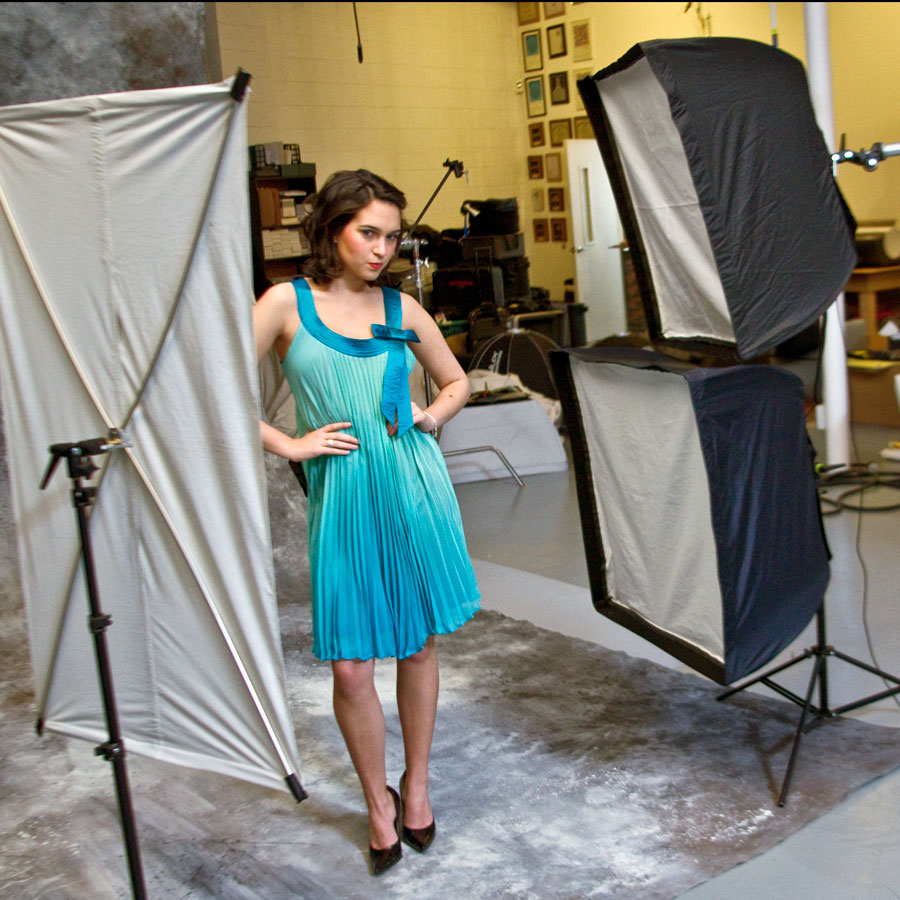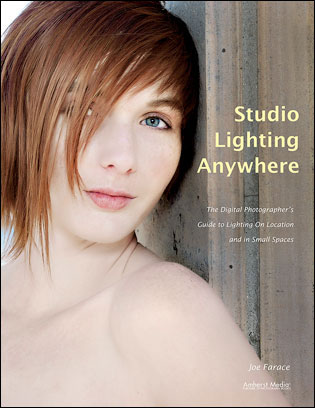Today’s Post by Joe Farace
 Portrait lighting sources have four major characteristics: color, direction, quantity, and quality. When working with any light source from speedlights to monolights the best way to improve the quality of your lighting is by using modification devices such as an umbrella or a softbox and each one of these has their own advantages and disadvantages. But no matter which one you chose, each device is governed by this important rule: The closer that a light source is to the subject the softer it is; the further away the light source is, the harder it becomes.
Portrait lighting sources have four major characteristics: color, direction, quantity, and quality. When working with any light source from speedlights to monolights the best way to improve the quality of your lighting is by using modification devices such as an umbrella or a softbox and each one of these has their own advantages and disadvantages. But no matter which one you chose, each device is governed by this important rule: The closer that a light source is to the subject the softer it is; the further away the light source is, the harder it becomes.
 The advantage of using softboxes is that they are available in large sizes that when placed close to a subject produce very soft, yet directional light. There are lots of accessories available for softboxes, such as grids or louvers that make the lighting even across the plane of light adding to their versatility. What’s the downside?
The advantage of using softboxes is that they are available in large sizes that when placed close to a subject produce very soft, yet directional light. There are lots of accessories available for softboxes, such as grids or louvers that make the lighting even across the plane of light adding to their versatility. What’s the downside?
Compared to umbrellas, most softboxes aren’t cheap so all that directionality comes with a price. That’s because softboxes are more complex to produce than umbrellas, so they cost more and because sizes vary from small speedlight-specific models to humongous and you can expect to pay $100 (although there are cheaper models) or more for something to get you started. Unlike umbrellas that are forgiving, lightbanks require some basic knowledge of balancing the main versus fill light (that fill could even be an umbrella) so it won’t produce too contrasty lighting. Unless of course that’s what you want.
How I made this shot: For this full-length portrait of Victoria, two 30-inch FourSquare softboxes, each with a single Nikon SB 800 speedlight mounted, was used as the main ,light. A large reflector was placed at camera left. Backdrop was the “Carbonite by Joe Farace” muslin background that was formerly, but no longer, available from Silverlake Photo. The camera used was a Canon EOS 1D Mark IV with a now discontinued EF 28-135mm f/3.5-5.6 IS lens with an exposure of 1/100 sec at f/5.6 and ISO 200.
But choices are what this whole discussion of softboxes versus umbrellas is all about and you should select the light modifier that matches the kind of portrait that you’re trying to make. Sometimes that will require an umbrella and sometimes it’ll be a softbox. There is no “one size fits all” solution to lighting and ultimately the choice is yours and based on the desired lighting style and your budget. Just as you will select the right lens and ISO for a natural light photograph, when it comes to working with artificial light you need to select the right tool for that job too.

If you’re interested in shooting portraits and learning how I use cameras, lenses and lighting in my in-home studio or on location, please pick up a copy of Studio Lighting Anywhere that’s available from Amazon.com with new copies selling for $15.69. Used copies are selling from $6.94 as I write this, which is a heckuva deal for all of the useful information found in the book. The Kindle edition is $14.91 for those preferring a digital format.